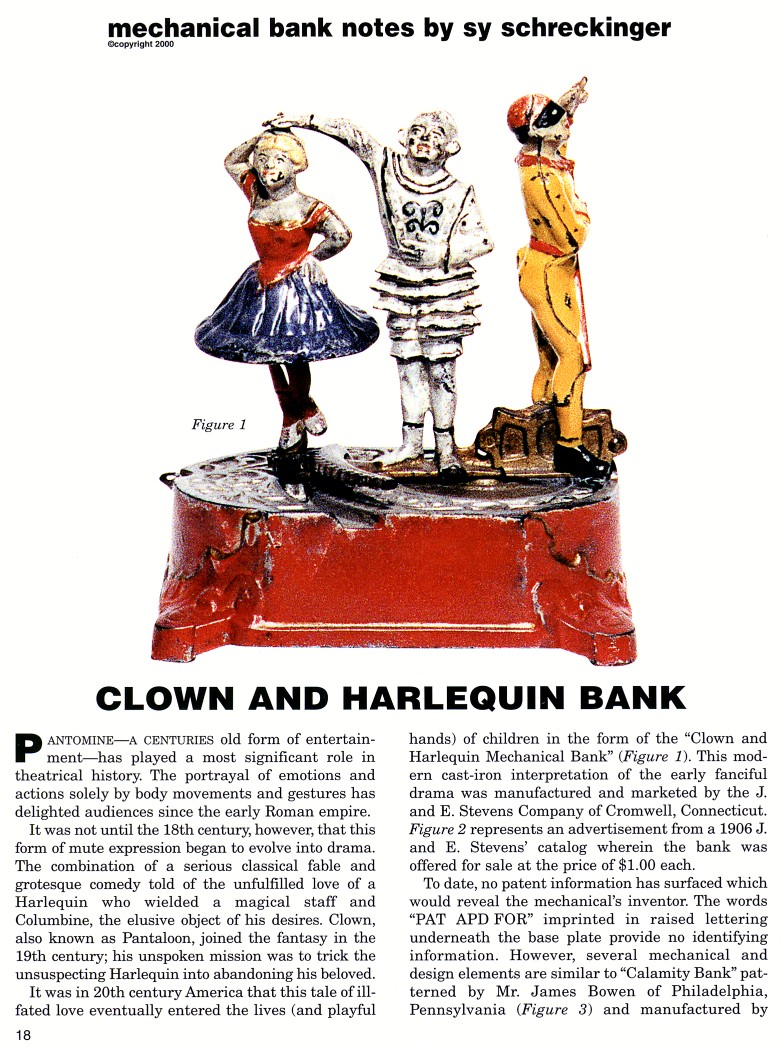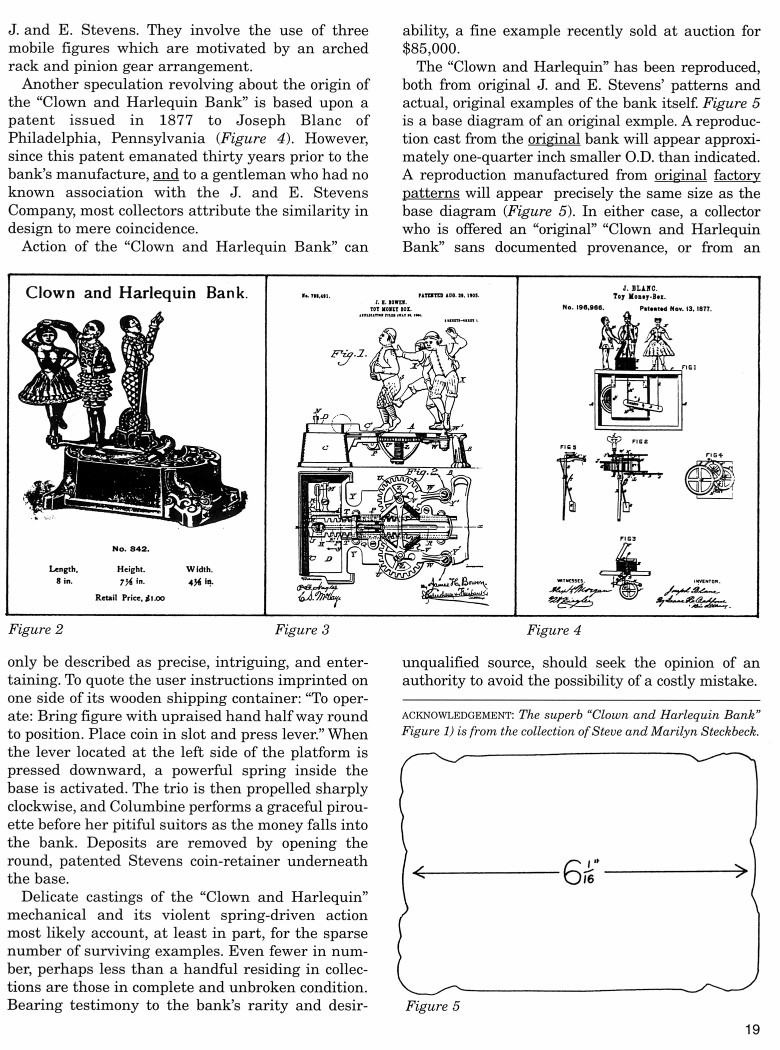|
Clown and Harlequin Bank
by Sy Schreckinger – ANTIQUE TOY WORLD Magazine – March, 2000
Pantomine — a centuries old form of entertainment — has played a
most significant role in theatrical history. The portrayal of emotions and
actions solely by body movements and gestures has delighted audiences
since the early Roman empire.
It was not until the 18th century, however, that this form of mute
expression began to evolve into drama. The combination of a serious
classical fable and grotesque comedy told of the unfulfilled love of a
Harlequin who wielded a magical staff and Columbine, the elusive object of
his desires. Clown, also known as Pantaloon, joined the fantasy in the
19th century; his unspoken mission was to trick the unsuspecting Harlequin
into abandoning his beloved.
It was in 20th century America that this tale of ill-fated love
eventually entered the lives (and playful hands) of children in the form
of the "Clown and Harlequin Mechanical Bank" (Figure 1). This modern
cast-iron interpretation of the early fanciful drama was manufactured and
marketed by the J. and E. Stevens Company of Cromwell, Connecticut. Figure
2 represents an advertisement from a 1906 J. and E. Stevens' catalog
wherein the bank was offered for sale at the price of $1.00 each.
To date, no patent information has surfaced which would reveal the
mechanical's inventor. The words "PAT APD FOR" imprinted in raised
lettering underneath the base plate provide no identifying information.
However, several mechanical and design elements are similar to "Calamity
Bank" patterned by Mr. James Bowen of Philadelphia, Pennsylvania (Figure
3) and manufactured by J. and E. Stevens. They involve the use of three
mobile figures which are motivated by an arched rack and pinion gear
arrangement.
Another speculation revolving about the origin of the "Clown and
Harlequin Bank" is based upon a patent issued in 1877 to Joseph Blanc of
Philadelphia, Pennsylvania (Figure 4). However, since this patent emanated
thirty years prior to the bank's manufacture, and to a gentleman who had
no known association with the J. and E. Stevens Company, most collectors
attribute the similarity in design to mere coincidence.
Action of the "Clown and Harlequin Bank" can only be described as
precise, intriguing, and entertaining. To quote the user instructions
imprinted on one side of its wooden shipping container: "To operate: Bring
figure with upraised hand half way round to position. Place coin in slot
and press lever." When the lever located at the left side of the platform
is pressed downward, a powerful spring inside the base is activated. The
trio is then propelled sharply clockwise, and Columbine performs a
graceful pirouette before her pitiful suitors as the money falls into the
bank. Deposits are removed by opening the round, patented Stevens
coin-retainer underneath the base.
Delicate castings of the "Clown and Harlequin" mechanical and its
violent spring-driven action most likely account, at least in part, for
the sparse number of surviving examples. Even fewer in number, perhaps
less than a handful residing in collections are those in complete and
unbroken condition. Bearing testimony to the bank's rarity and
desirability, a fine example recently sold at auction for $85,000.
The "Clown and Harlequin" has been reproduced, both from original J.
and E. Stevens' patterns and actual, original examples of the bank itself.
Figure 5 is a base diagram of an original example. A reproduction cast
from the original bank will appear approximately one-quarter inch smaller
O.D. than indicated. A reproduction manufactured from original factory
patterns will appear precisely the same size as the base diagram (Figure
5). In either case, a collector who is offered an "original" "Clown and
Harlequin Bank" sans documented provenance, or from an unqualified source,
should seek the opinion of an authority to avoid the possibility of a
costly mistake.
ACKNOWLEDGEMENT: The superb "Clown and Harlequin Bank" Figure 1) is
from the collection of Steve and Marilyn Steckbeck.
|


